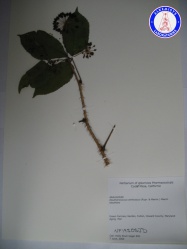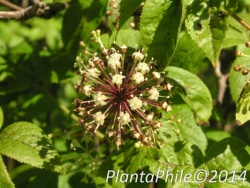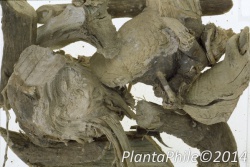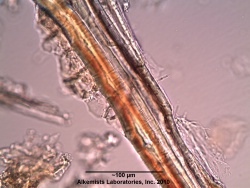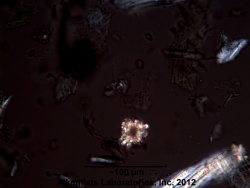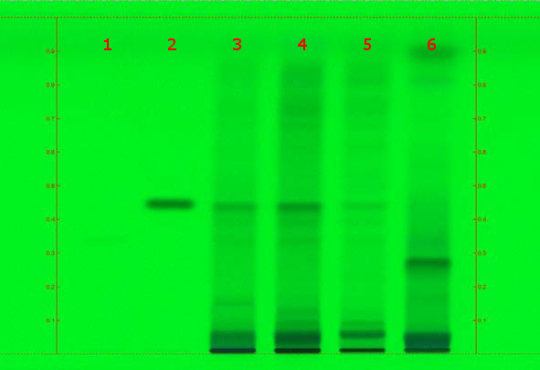Eleutherococcus senticosus (root bark)
(→add category divisions and wikipedia references) |
m (correct link to CAMAG http://www.camag.com/ rather than http://www.camag.com/index.php) |
||
| (25 intermediate revisions by 4 users not shown) | |||
| Line 1: | Line 1: | ||
| − | = | + | {{DISPLAYTITLE:''Eleutherococcus senticosus'' (root bark)}} {{askbox|herb=''Eleutherococcus senticosus''}} |
| + | =Nomenclature= | ||
| − | + | {{nomenclature | binomial=Eleutherococcus senticosus | |
| + | |authority=(Rupr. & Maxim.) Maxim. | ||
| + | |family=Araliaceae | ||
| + | |scn=eleuthero | ||
| + | |syn=''Acanthopanax senticosus'' (Rupr. & Maxim.) Harms | ||
| + | |ayurvedic= | ||
| + | |pinyin=ci wu jia (root & rhizome) | ||
| + | |aka=Siberian ginseng; Ussurian thorny pepperbush | ||
| + | |notes= }} | ||
| − | + | =Botanical Voucher Specimen= | |
| + | {{Media |cat=Voucher|companyimage= AP-LOGO-Laboratories Crop - Copy.jpg | ||
| + | | companyURL= http://www.alkemist.com | ||
| + | |mainimage= Eleutherococcus senticosus NF19505JD A0432.jpg | ||
| + | |source= Botanical Voucher Specimen Library, Alkemists Laboratories }} | ||
| + | =Organoleptic Characteristics= | ||
| − | + | =Macroscopic Characteristics= | |
| + | {{ Media2 | cat=Macroscopy | ||
| + | | source=PlantaPhile | ||
| + | | mainimage=PlantaPhile - 2702.jpg | ||
| + | | companyimage=PlantaPhile logo.jpg | ||
| + | | companyURL=http://plantaphile.com/ | ||
| − | + | | source2=PlantaPhile | |
| + | | image2=PlantaPhile - 2591.jpg | ||
| + | | companyimage2=PlantaPhile logo.jpg | ||
| + | | companyURL2=http://plantaphile.com/ | ||
| + | | }} | ||
| + | =Microscopic Characteristics= | ||
| + | {{Media2 |cat=Microscopy |companyimage= AP-LOGO-Laboratories Crop - Copy.jpg | ||
| + | | companyURL= http://www.alkemist.com | ||
| + | |mainimage= Eleutherococcus_senticosus_(Rupr._&_Maxim.)_-Araliaceae-_thick-walled_lignified_fiber.jpg | ||
| + | | caption1=Thick-walled lignified fiber of ''Eleutherococcus senticosus'' root viewed at 400x with Acidified Chloral Hydrate Solution. | ||
| + | |source= Elan M. Sudberg, Alkemist Laboratories | ||
| + | |image2= Eleutherococcus_senticosus_(Rupr._&_Maxim.)_-Araliaceae-_Large_rosettes_of_Calcium_Oxalate.jpg | ||
| + | |caption2= Large rosettes viewed at 400x under polarized light with Acidified Chloral Hydrate Solution. | ||
| + | |companyimage2= AP-LOGO-Laboratories Crop - Copy.jpg | ||
| + | | companyURL2= http://www.alkemist.com | ||
| + | |source2= Elan M. Sudberg, Alkemist Laboratories }} | ||
| − | = | + | =High Performance Thin Layer Chromatographic Identification= |
| + | {{HPTLC | source=AHPA Practical, CAMAG HPTLC | ||
| + | | companyimage=Camag_logo.png | ||
| + | | companyURL=http://www.camag.com/ | ||
| + | | mainimage=Camag-eleuthero-1-d-uv254.png | ||
| + | | caption1=Eleuthero HPTLC ID - Developed, UV 254 nm | ||
| + | | description=Eleuthero (root) (''Eleutherococcus senticosus'') | ||
| + | | image2=Camag-eleuthero-1-H2SO4-whiteRT.png | ||
| + | | caption2=Eleuthero HPTLC ID - Sulfuric Acid Reagent, white RT | ||
| + | | | ||
| + | | stationaryphase=Stationary phase, i.e. Silica gel 60, F254 | ||
| + | | mobilephase=Chloroform, methanol, water 70:30:4 (v/v/v) | ||
| + | | prep=Sample: Mix 1 g of powdered sample with 5 mL of ethanol-water | ||
| + | (1:1) and sonicate for 10 minutes, then centrifuge or filter | ||
| + | the solutions and use the supernatants / filtrates as test | ||
| + | solutions | ||
| − | = | + | Sulfuric Acid Reagent: Preparation: 20 mL of sulfuric acid are mixed with 180 mL |
| + | of ice-cooled methanol | ||
| + | | detection=UV/Vis, Sulfuric Acid Reagent Use: Dip (time 0, speed 5), heat at 100°C for 5 min | ||
| + | | referencesamples=Reference: Dissolve 1 mg of eleutheroside B and 1 mg of | ||
| + | eleutheroside E individually in 1.5 mL of ethanol-water | ||
| + | (1:1). | ||
| + | | lanes=Lanes, from left to right (Track, Volume, Sample): (2 μL of references, 10 μL of test solutions) | ||
| + | # 2 μL Eleutheroside E | ||
| + | # 2 μL Eleutheroside B | ||
| + | # 10 μL Eleuthero extract 1 | ||
| + | # 10 μL Eleuthero extract 2 | ||
| + | # 10 μL Eleuthero root | ||
| + | # 5 μL ''Periploca sepium'' root | ||
| + | | notes=System suitability test: After derivatization the fingerprint of the test solution shows a zone corresponding to eleutheroside | ||
| + | B and another zone directly below. These two zones appear as two distinct bands, compare lane 2 with lanes 3, 4 and lane 1 with corresponding feature in 3, 4. An arrow marking the distinct bands appears in the illustration in ''further methodology'', below. | ||
| + | Identification: Compare result under UV 254 nm and white RT with reference images in Image Comparison | ||
| + | Viewer. The fingerprint of the test solution is similar to that of the corresponding botanical reference | ||
| + | sample. Additional weak zones may be present. | ||
| − | + | Eleuthero: The chromatogram of the test solution shows bands corresponding to | |
| − | + | eleutherosides E (Rf 0.34) and B (Rf 0.45), and two very strong bands near | |
| − | + | the application zone. Additional brownish-purple zones are seen between | |
| + | eleutheroside E and the solvent front. | ||
| − | = | + | ''Periploca sepium'' Adulteration: No band corresponding to eleutheroside B is seen, but strong brown bands |
| + | at Rf=0.53 and Rf=0.28 are detected. | ||
| − | + | Further methodology available here, in [http://www.ahpa.org/portals/0/pdfs/Eleuthero_ID_Method.pdf Identification method of ''Eleutherococcus senticosus'' by HPTLC]. | |
| + | | }} | ||
| + | =Supplementary Information= | ||
{{Botanical | source=AHPA Known Adulterants | {{Botanical | source=AHPA Known Adulterants | ||
| + | | companyimage=AHPA Logo.gif | ||
| + | | companyURL=http://www.ahpa.org/ | ||
| description=Eleuthero (root bark) (''Eleutherococcus senticosus'') | | description=Eleuthero (root bark) (''Eleutherococcus senticosus'') | ||
| characteristics=AHPA recommends in its [http://www.ahpa.org/Default.aspx?tabid=223#section_known_adulterants Known Adulterants list] that appropriate steps be taken to assure that this raw material is free of the noted adulterant. [mailto:ahpa@ahpa.org Contact AHPA] for additional information regarding relevant analytical methods or follow [http://www.ahpa.org/Default.aspx?tabid=242 this link] for more information. | | characteristics=AHPA recommends in its [http://www.ahpa.org/Default.aspx?tabid=223#section_known_adulterants Known Adulterants list] that appropriate steps be taken to assure that this raw material is free of the noted adulterant. [mailto:ahpa@ahpa.org Contact AHPA] for additional information regarding relevant analytical methods or follow [http://www.ahpa.org/Default.aspx?tabid=242 this link] for more information. | ||
| Line 28: | Line 100: | ||
}} | }} | ||
| − | ==AHPA Practical: Identification and Quality Control of Eleuthero (''Eleutherococcus senticosus'') | + | ==AHPA Practical: Identification and Quality Control of Eleuthero (root) (''Eleutherococcus senticosus'')== |
[[Category:AHPA Practicals]] | [[Category:AHPA Practicals]] | ||
| + | [[File:AHPA Logo.gif|right|150x75px|link=http://www.ahpa.org/]] | ||
===Introduction=== | ===Introduction=== | ||
| − | Neonatal androgenization was associated with the ingestion of a product during pregnancy, which was labeled as containing Siberian ginseng (1). The image on the product was of an actual ginseng plant (Panax spp.) not ''Eleutherococcus senticosus'' (formerly sometimes referred to as Siberian ginseng) and analysis of the product indicated that neither eleuthero nor ginseng compounds were present, but that Chinese silk vine (''Periploca sepium'') was (2). | + | Neonatal androgenization was associated with the ingestion of a product during pregnancy, which was labeled as containing Siberian ginseng (1). The image on the product was of an actual ginseng plant (''Panax spp.'') not ''Eleutherococcus senticosus'' (formerly sometimes referred to as Siberian ginseng) and analysis of the product indicated that neither eleuthero nor ginseng compounds were present, but that Chinese silk vine (''Periploca sepium'') was (2). |
===Methods of Analysis=== | ===Methods of Analysis=== | ||
| + | ====HPLC Method==== | ||
| + | [[Category:HPLC]] | ||
[http://www.ncbi.nlm.nih.gov/pubmed/15688958?ordinalpos=59&itool=EntrezSystem2.PEntrez.Pubmed.Pubmed_ResultsPanel.Pubmed_DefaultReportPanel.Pubmed_RVDocSum Quality control of roots of ''Eleutherococcus senticosus'' by HPLC] | [http://www.ncbi.nlm.nih.gov/pubmed/15688958?ordinalpos=59&itool=EntrezSystem2.PEntrez.Pubmed.Pubmed_ResultsPanel.Pubmed_DefaultReportPanel.Pubmed_RVDocSum Quality control of roots of ''Eleutherococcus senticosus'' by HPLC] | ||
| − | [http://www.ahpa.org/portals/0/pdfs/Eleuthero_ID_Method.pdf Identification method of '' | + | ====HPTLC Method==== |
| + | [[Category:HPTLC]] | ||
| + | [http://www.ahpa.org/portals/0/pdfs/Eleuthero_ID_Method.pdf Identification method of ''Eleutherococcus senticosus'' by HPTLC] | ||
===References=== | ===References=== | ||
| Line 50: | Line 127: | ||
[http://www.ncbi.nlm.nih.gov/pubmed/1564770 Waller DP et al. Lack of androgenicity of Siberian ginseng. Journal of the American Medical Association, 1991, 265:1826.] | [http://www.ncbi.nlm.nih.gov/pubmed/1564770 Waller DP et al. Lack of androgenicity of Siberian ginseng. Journal of the American Medical Association, 1991, 265:1826.] | ||
| + | |||
| + | =Sources= | ||
| + | |||
| + | <references /> | ||
Latest revision as of 16:54, 8 December 2015
Contents |
Nomenclature
Eleutherococcus senticosus (Rupr. & Maxim.) Maxim. Araliaceae
Syn. Acanthopanax senticosus (Rupr. & Maxim.) Harms
Standardized common name (English): eleuthero
Pinyin name(s): ci wu jia (root & rhizome)
Botanical Voucher Specimen
 |
|
|
Organoleptic Characteristics
Macroscopic Characteristics
|
|
|
Microscopic Characteristics
 |
 |
|
|
|
High Performance Thin Layer Chromatographic Identification
|
Eleuthero (root) (Eleutherococcus senticosus) Lane Assignments Lanes, from left to right (Track, Volume, Sample): (2 μL of references, 10 μL of test solutions)
Reference Sample(s) Reference: Dissolve 1 mg of eleutheroside B and 1 mg of eleutheroside E individually in 1.5 mL of ethanol-water (1:1). Stationary Phase Stationary phase, i.e. Silica gel 60, F254 Mobile Phase Chloroform, methanol, water 70:30:4 (v/v/v) Sample Preparation Method Sample: Mix 1 g of powdered sample with 5 mL of ethanol-water (1:1) and sonicate for 10 minutes, then centrifuge or filter the solutions and use the supernatants / filtrates as test solutions Sulfuric Acid Reagent: Preparation: 20 mL of sulfuric acid are mixed with 180 mL of ice-cooled methanol Detection Method UV/Vis, Sulfuric Acid Reagent Use: Dip (time 0, speed 5), heat at 100°C for 5 min Other Notes System suitability test: After derivatization the fingerprint of the test solution shows a zone corresponding to eleutheroside B and another zone directly below. These two zones appear as two distinct bands, compare lane 2 with lanes 3, 4 and lane 1 with corresponding feature in 3, 4. An arrow marking the distinct bands appears in the illustration in further methodology, below. Identification: Compare result under UV 254 nm and white RT with reference images in Image Comparison Viewer. The fingerprint of the test solution is similar to that of the corresponding botanical reference sample. Additional weak zones may be present. Eleuthero: The chromatogram of the test solution shows bands corresponding to eleutherosides E (Rf 0.34) and B (Rf 0.45), and two very strong bands near the application zone. Additional brownish-purple zones are seen between eleutheroside E and the solvent front. Periploca sepium Adulteration: No band corresponding to eleutheroside B is seen, but strong brown bands at Rf=0.53 and Rf=0.28 are detected. Further methodology available here, in Identification method of Eleutherococcus senticosus by HPTLC. Source: AHPA Practical, CAMAG HPTLC [6] |
Supplementary Information
Eleuthero (root bark) (Eleutherococcus senticosus)
General Characteristics AHPA recommends in its Known Adulterants list that appropriate steps be taken to assure that this raw material is free of the noted adulterant. Contact AHPA for additional information regarding relevant analytical methods or follow this link for more information.
Reported Adulterants Periploca sepium root.
Source: AHPA Known Adulterants [7]
AHPA Practical: Identification and Quality Control of Eleuthero (root) (Eleutherococcus senticosus)
Introduction
Neonatal androgenization was associated with the ingestion of a product during pregnancy, which was labeled as containing Siberian ginseng (1). The image on the product was of an actual ginseng plant (Panax spp.) not Eleutherococcus senticosus (formerly sometimes referred to as Siberian ginseng) and analysis of the product indicated that neither eleuthero nor ginseng compounds were present, but that Chinese silk vine (Periploca sepium) was (2).
Methods of Analysis
HPLC Method
Quality control of roots of Eleutherococcus senticosus by HPLC
HPTLC Method
Identification method of Eleutherococcus senticosus by HPTLC
References
- Koren G et al. Maternal ginseng use associated with neonatal androgenization. Journal of the American Medical Association, 1990, 264:1866.
- Awang DV. Maternal use of ginseng and neonatal androgenization. Journal of the American Medical Association, 1991, 264:2865.
Additional Information
Awang D. Siberian ginseng toxicity may be case of mistaken identity. CMAJ. 1996 Nov 1;155(9):1237.
Sources
- ↑ Botanical Voucher Specimen Library, Alkemists Laboratories http://www.alkemist.com
- ↑ PlantaPhile http://plantaphile.com/
- ↑ PlantaPhile http://plantaphile.com/
- ↑ Elan M. Sudberg, Alkemist Laboratories http://www.alkemist.com
- ↑ Elan M. Sudberg, Alkemist Laboratories http://www.alkemist.com
- ↑ AHPA Practical, CAMAG HPTLC http://www.camag.com/
- ↑ AHPA Known Adulterants http://www.ahpa.org/
